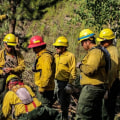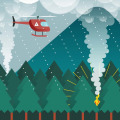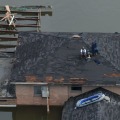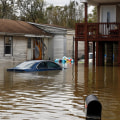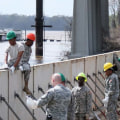Prevention, mitigation, preparedness, response and recovery are the five steps of emergency management. Developing a comprehensive emergency action plan involves carrying out a hazard assessment to determine what physical or chemical hazards inside or outside workplaces could cause an emergency, if any. The plan should describe how workers will respond to different types of emergencies, taking into account specific workplace designs, structural features, and emergency systems. If there is more than one work site, each site must have an emergency action plan.
When designing an emergency plan, you'll first identify all of the assets you need to protect. Your people are by far your most important asset. Others may include your facilities, parts and products, intellectual property, technology, office furniture and supplies, and company vehicles. All of these assets are at risk when an emergency arises. Emergency responses must attempt to contain, control, or end the emergency.
This includes evacuating buildings, fighting fires, turning off public services, and other response activities. Before the days when active shooters, terrorism and lone criminals, and the advent of social networks dominated our daily lives, an emergency plan consisted of calling 911 and waiting for the police or firefighters to arrive, or activating the fire alarm, evacuating and waiting for first responders to arrive. This is no longer the case. Activating the fire alarm and evacuating is not the right response to an active shooting scenario. In fact, it can be dangerous to set off alarms if the shooter or shooters are nearby; it's best to take refuge in an office or other secure area if the shooters' whereabouts are not known.
Notification tools, such as email, voice, and bulk text messages, are now common on college campuses and businesses. However, keep in mind that no one will receive the alert notification unless someone initiates the process, not only by calling 911, but also by notifying the people responsible for sending the message to do so. In many cases, the incident (shooting or stabbing) has already ended before the police arrive, and social networks offer reports that are often wrong. Every company has a unique range of emergencies it faces, but there are some consistent response procedures that you can customize to your individual risks. If the issue is not an emergency that requires an immediate response from firefighters, police, or emergency medical services, call Campus Safety. In addition, the technological model will be selected based on the operational requirements of emergency response plans, such as the corrosion model and the gas dispersion model.
That model must be established in the leak plans, the impulse transfer, the heat transfer and the mass transfer model must be selected in the heat exchange operation. This approach boils down to a comprehensive emergency response plan for all the threats your business may face. The incident commander is in charge of activating the emergency response plan and is the one who must make all critical decisions. Preparing for a discussion like that is all the more good reason to think about the activities involved in developing an emergency response plan. The first step in creating an emergency response plan is to conduct a comprehensive threat assessment to identify the types of events that may affect your organization and analyze their likelihood and possible impact.
Petri's hierarchical network model is used to describe the process of implementing emergency response plans, which is the dynamic and interactive process between equipment and operators. Compile an inventory of available equipment, tools and supplies and include it in the emergency response plan. The benefit of booster stations for emergency response depends on several factors such as the reaction between chlorine and an unknown contaminant species; the destination and transportation of the contaminant in the water distribution system; and the delay between detection and the start of the increase in chlorine levels. Each level of PPE (Personal Protective Equipment), described in detail in Appendix B of OSHA's Hazardous Waste Operations and Emergency Response Standard (HAZWOPER) (29 CFR 1910.120), consists of a combination of protective equipment and clothing that help reduce respiratory, eye, skin and other exposures.
To use this guide effectively, employers must assess the risk of a hazardous substance being released to emergency response workers and base their selection of personal protective equipment on that risk. For example; if you have a hazardous materials spill your emergency response plan will explain how to keep people safe and how to contain it. Employers may be required to comply with OSHA's hazardous waste operations and emergency response (HAZWOPER) standard (29 CFR 1910.120) when workers are expected to perform shutdown processes. OSHA publication 3122 entitled Main Emergency Response & Preparedness Requirements in OSHA Standards & Guidelines for Safety & Health Issues provides an overview of OSHA regulations related to emergency planning.
In small establishments it is common to include places in their plan where workers or emergency responders can interrupt public services (such as electricity & gas) in all or part of their facilities.
